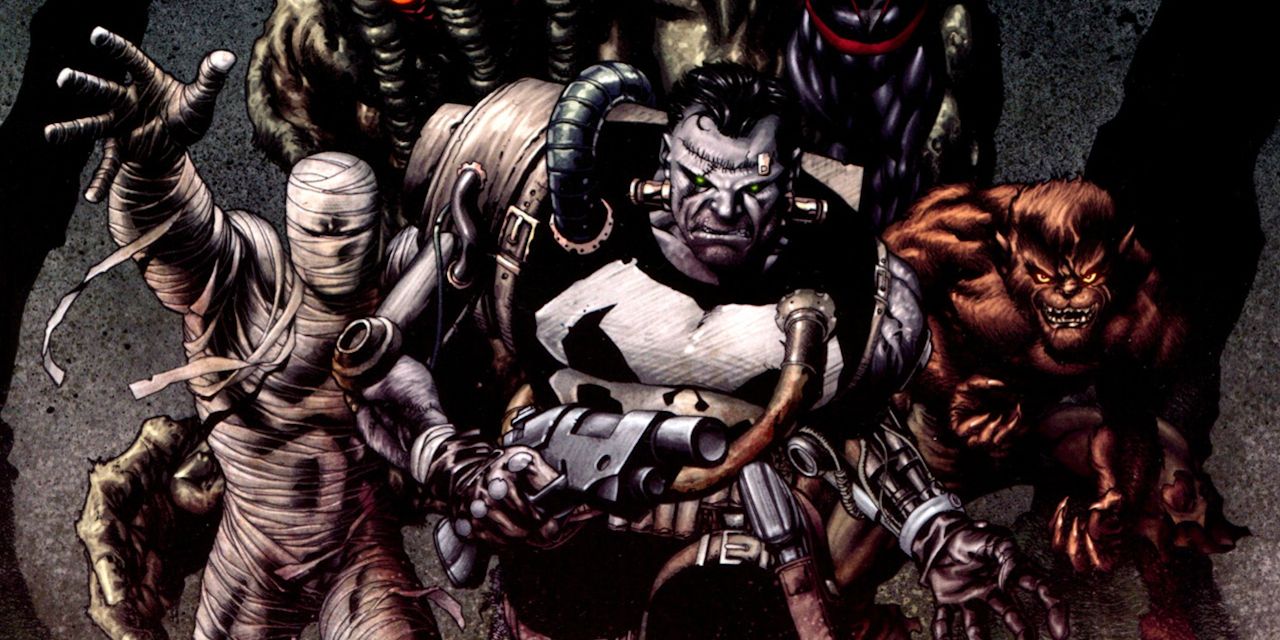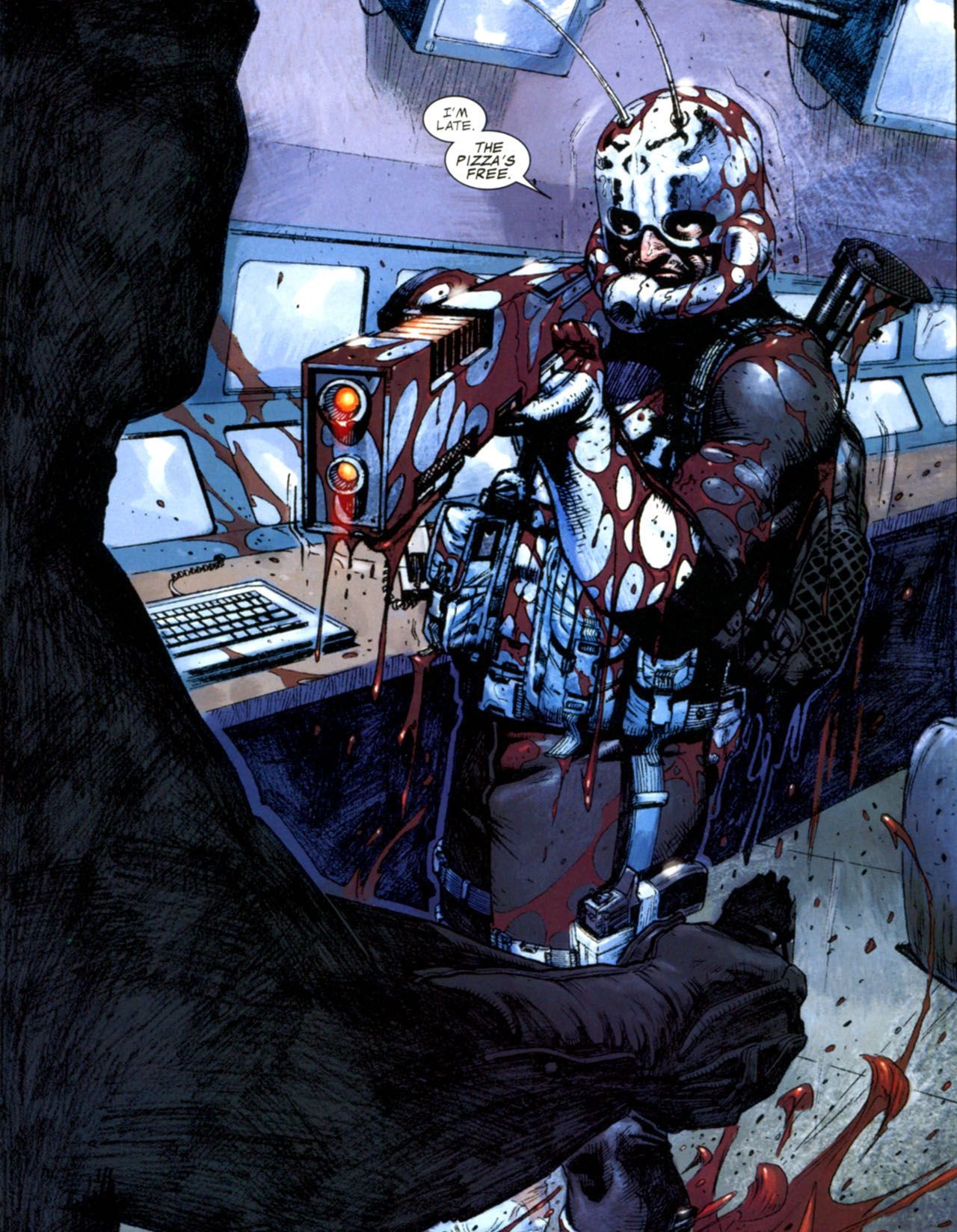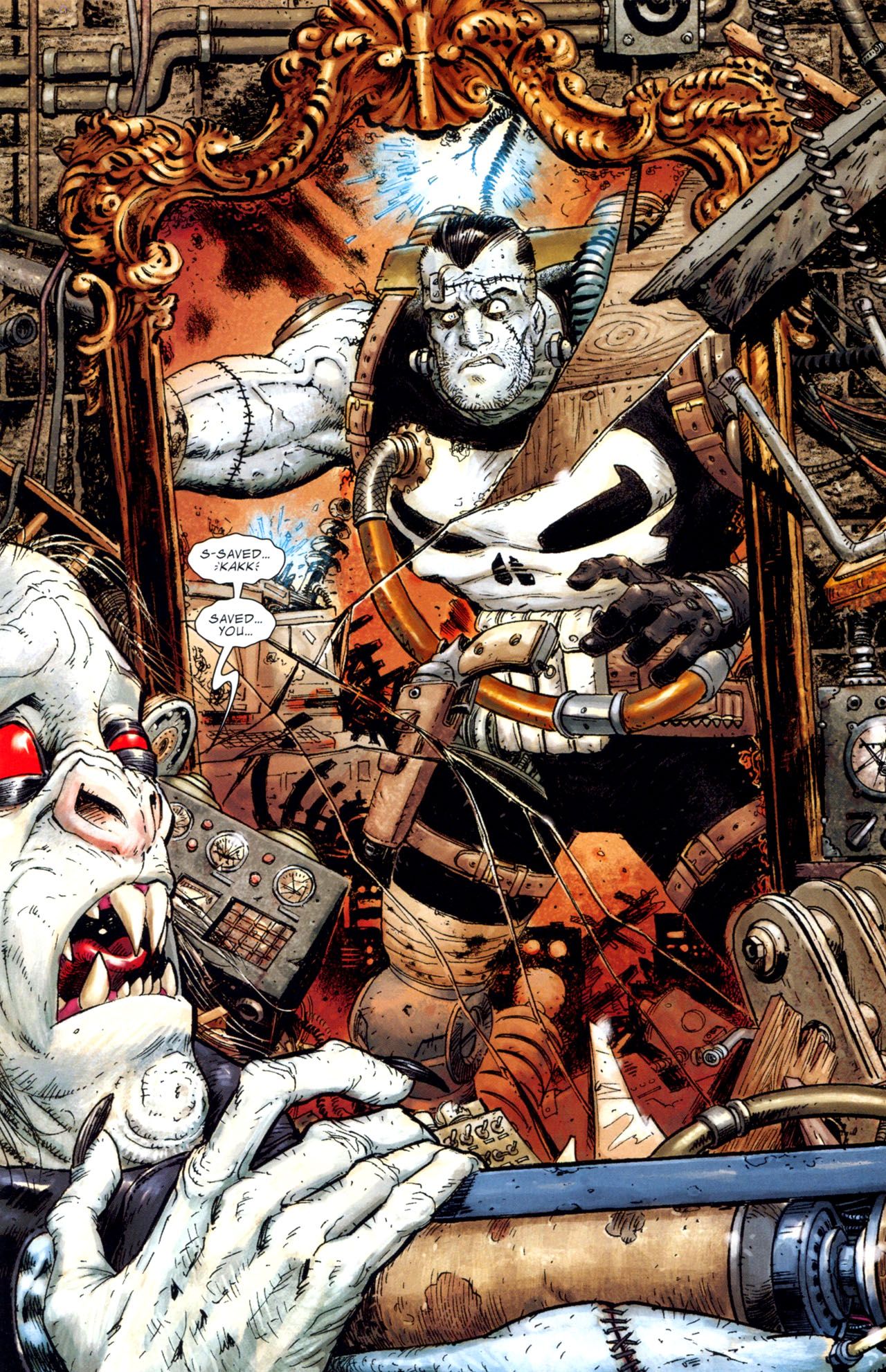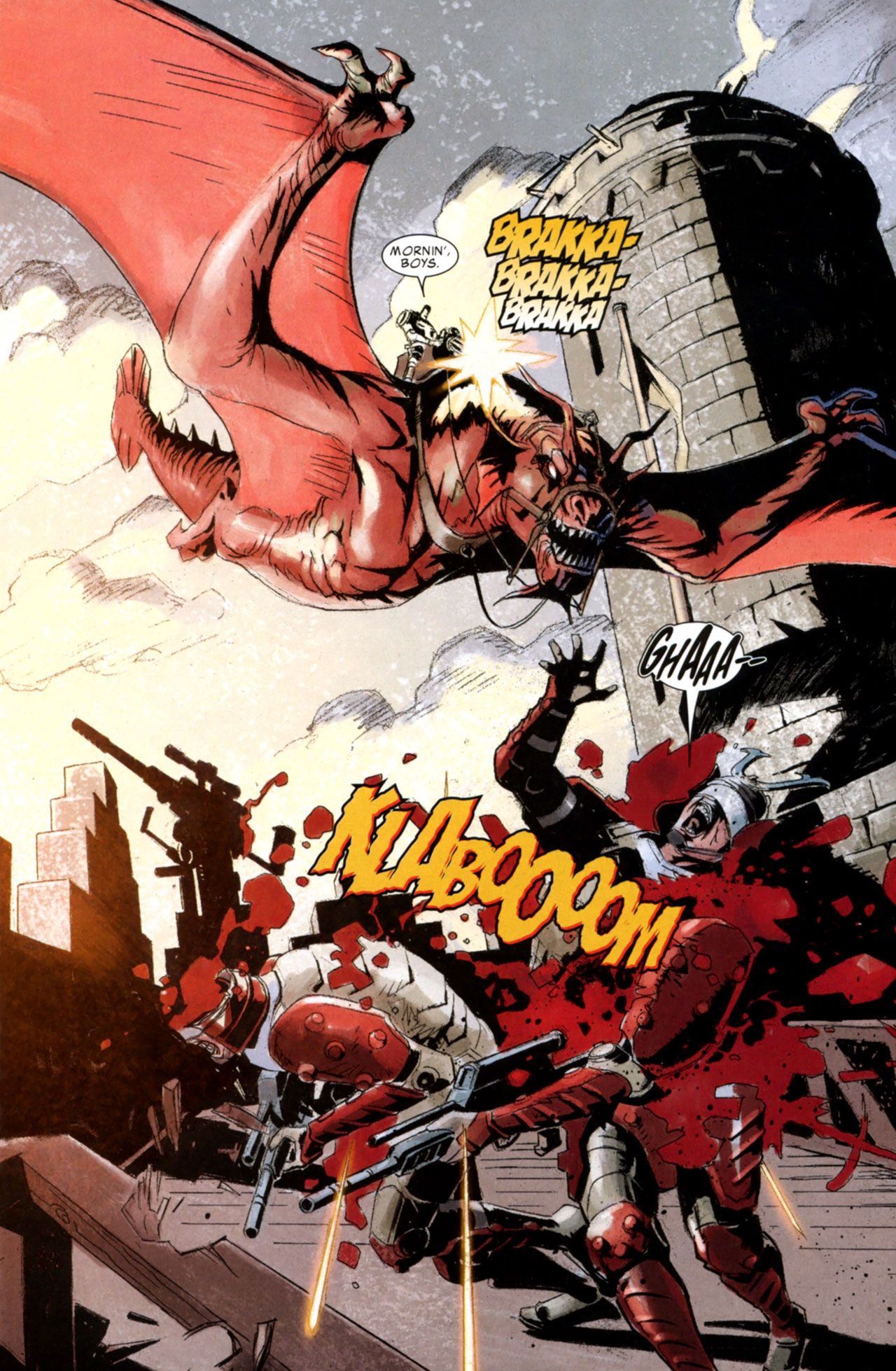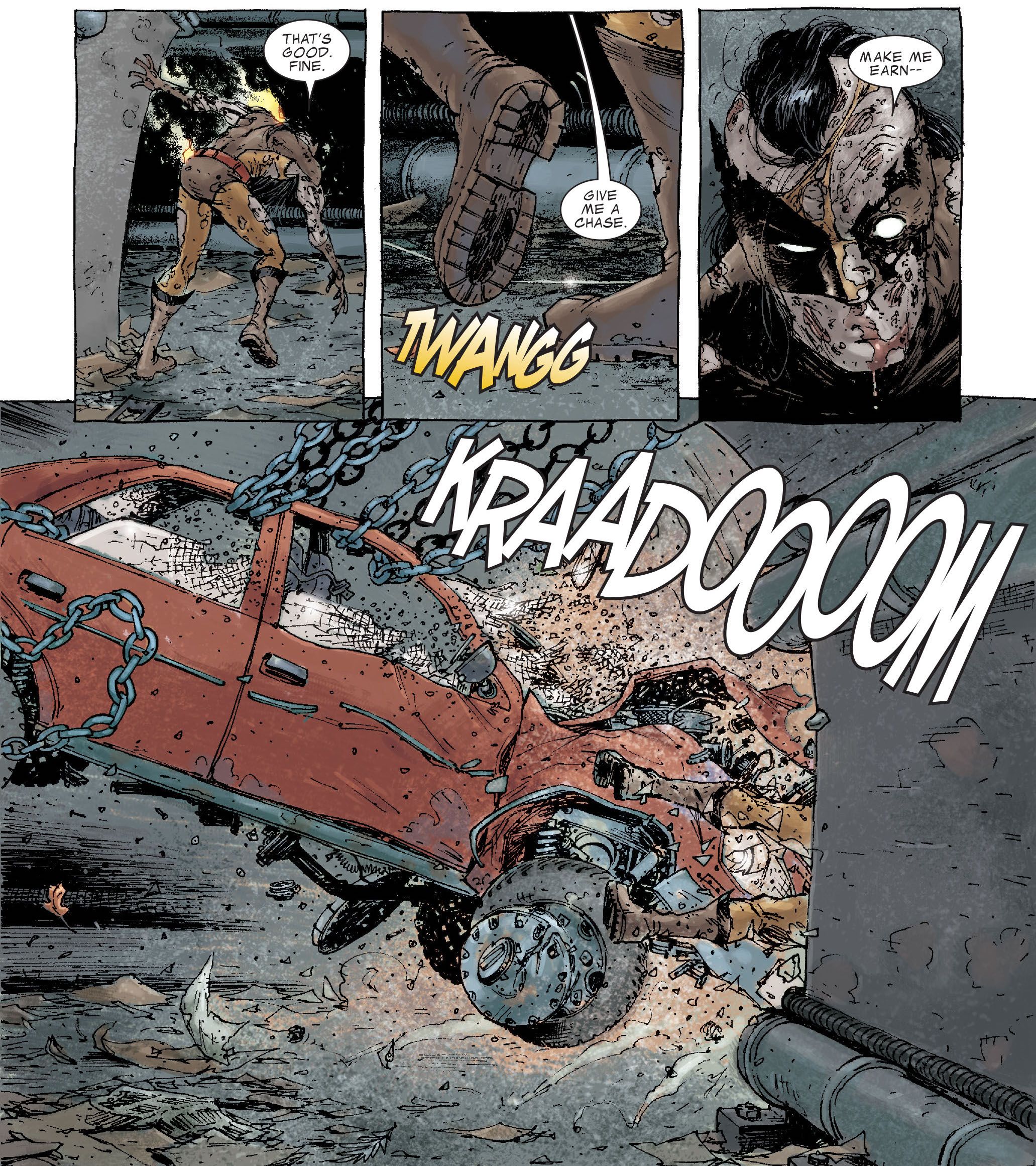Of all of Marvel’s "street-level" heroes, the Punisher is perhaps the most grounded; he's serious, gritty. The last rod most people would use to describe the gun-totting vigilante Frank Castle as being is “weird," right? Garth Ennis’ tenure on 2004 The Punisher MAX is arguably the definitive Punisher run, and that’s by far the most realistic depiction of the character, taking place in a world where super-powered beings don’t exist. But can The Punisher work if he’s weird?
The biggest argument against a non-weird Punisher would be the 1998 limited series by writers Christopher Golden and Thomas Sniegoski, and artist Bernie Wrightson. In that title, a dead Frank Castle (he commits suicide off-panel before this run begins) is resurrected as an angel of vengeance and now hunts down rogue demons using weapons he pulls from a magical coat. The series also retconned his origin, revealing that the man responsible for killing his family was actually a demon. It’s a supernatural twist that just didn’t gel with the character. It was too silly – Syfy Original Movies silly. The concept was thrown out by Ennis and Steve Dillon in their 2000 The Punisher run, and the less said about it the better.
RELATED: Yes, The Punisher Now Has Rhodey's War Machine Armor
With that in mind, is it possible to tell a story with the Punisher that involves him being brought back from the dead to fight monsters? Believe it or not, yes.
The 2009 Punisher series, written by Rick Remender with art by Jerome Opeña, Tan Eng Huat and Tony Moore, was launched as a part of Marvel's year-long "Dark Reign" branding event. The first issue opens with Frank trying to assassinate Norman Osborn, then head of H.A.M.M.E.R., the agency formed to replace S.H.I.E.L.D. The Sentry foils the plot, and then proceeds to chase down Frank, who's only able to escape because he’s momentarily able to distract the superheor with a bomb hoax.
The primary antagonist for the first half of Remender & Co.'s run is The Hood, the supernatural crime lord who's part of Osborn’s secret society, the Cabal. Using forbidden magic, The Hood strengthens his criminal empire by resurrecting deceased supervillains, and in the process brings back the Punisher’s old partner Microchip. However, his plan to take down the Punisher (unsurprisingly) doesn’t work.
What makes that run stand out is the humor, and how unafraid it is to embrace the inherent B-grade cheesiness of the character. It's a strong blend of serious and goofy, with the Punisher dropping one-liners that’d make Die Hard’s John McClane proud. It’s also the run in which Frank infiltrates The Hood’s compound by shrinking himself with Pym Particles and hiding on a pizza, all while decked out with pieces of stolen superhero and supervillain tech: Ant-Man’s helmet, Hawkeye’s bow, a replica of Captain America’s shield, one of Iron Man's repulsor gloves (all painted to look like his iconic skull, naturally). It reads like the inverse to the stoic, humorless Punisher who appears in Ennis' MAX series.
Sick of Castle’s meddling, Osborn sends Daken to finally put an end to the antihero. Despite putting up a good fight, Castle is no match for Wolverine’s offspring, who cuts him to pieces him and dumps his remains in an alleyway.
And that’s where things begin to get really weird.
Page 2: [valnet-url-page page=2 paginated=0 text='Introducing%20...%20Franken-Castle']
Frank's remains are collected by a group of Moloids, the yellow-skinned humanoids that lurk beneath the Earh's surface, and taken into an underground refuge for monsters known as the Monster Metropolis. It's there that Morbius, Living Vampire and scientist, brings the Punisher back to life as an amalgam of corpse flesh and mad science.
Frank Castle is now Frankenstein's monster.
Frank, understandably, doesn’t take his resurrection too well and proceeds to go on a rampage throughout the subterranean city, only to be stopped by a giant lava monster. Once he's calmed down, Morbius explains why he brought Frank back. The Hunter of Monster Special Forces, led by Robert Hellsgaard, who's seeking revenge for the killing of his family by werewolves, are on the way to kill the inhabitants of the city. It's a direct parallel to Frank's origins, but where they differ is that Hellsgaard lacks the Punisher's moral barometer; in his view, all monsters are evil and deserve to die.
RELATED: The Punisher: 15 Things You Never Knew
The monsters need Franken-Castle, or else face genocide. While initially reluctant, Frank steps up into the role of the city's defender. He may be a monster now, but he's still the Punisher; punishing bad guys is what he does best. With the help of the Legion of Monsters – The Living Mummy, Werewolf By Night, Man-Thing and later Manphibian – they fight back.
Oh, Frank also flies around on the back of a dragon while mowing down bad guys with a Gatling gun.
Hellsgaard sees himself as a hero, but the great irony is that he's become as bad as, if not worse than, the monsters he hunts. He represents the one thing the Punisher can, and should, never be: someone who kills without caring about guilt or innocence. Even as a literal monster, he's more human than Hellsgaard. The Punisher may be driven by revenge, but he's not a mindless killer.
The second (and final) arc of Franken-Castle was a crossover with Dark Wolverine, with Frank hunting down Daken to take his revenge. The best way to describe that arc would be, "What if The Punisher was in a Wile E. Coyote and the Road Runner cartoon?" Franken-Castle #19 is one giant fight scene, with Daken falling for trap after trap, while Frank drops snappy one-liners. At one point Daken is thrown in front of a moving train, and is only able to sadly mutter "Oh, c'mo-" before become a smear on the tracks. Frank almost succeeds in killing Daken, only to be stopped when Wolverine steps in. It's a fun arc that really embraces the goofy side of Remender's run and the Franken-Castle concept.
On paper, “The Punisher, only he’s Frankenstein's Monster” probably shouldn’t work. In another creator’s hands, it could have been another Angel Punisher. It’s an incredibly weird take on the character, but Remender and his artistic collaborators make it work. Unlike Angel Punisher, Franken-Castle didn’t try to rewrite the past. It didn’t retcon it so that the Punisher’s skull symbol is actually the sigil for the demon that killed Frank’s family, and that every kill he’s ever made is actually a sacrifice to that demon. Becoming a Frankenstein monster was a drastic change, but it never strayed from who the Punisher is on a conceptual level. His character remains consistent with the rest of Remender’s run. He avenges the weak and punishes the objectively bad. He’s just swapped the streets of New York for the Monster Metropolis.
Franken-Castle was over within a year (a Bloodstone Gem is embedded in Frank’s chest, returning him to normal with its regenerative powers). It's a shame, because those two arcs are a ton of fun that used the Punisher in a unique way that nevertheless remained true to the character. It would've been nice to see maybe one or two more arcs with the character, but it's understandable why the status quo returned. Remender and Roland Boschi’s follow-up limited series, The Punisher: In the Blood, feels more in line with the tone of the first half of Remender's run – a tone that was continued with Greg Rucka and Marco Checchetto’s stint with the character. There are plenty of great serious Punisher comics, but there’s only one Franken-Castle.

